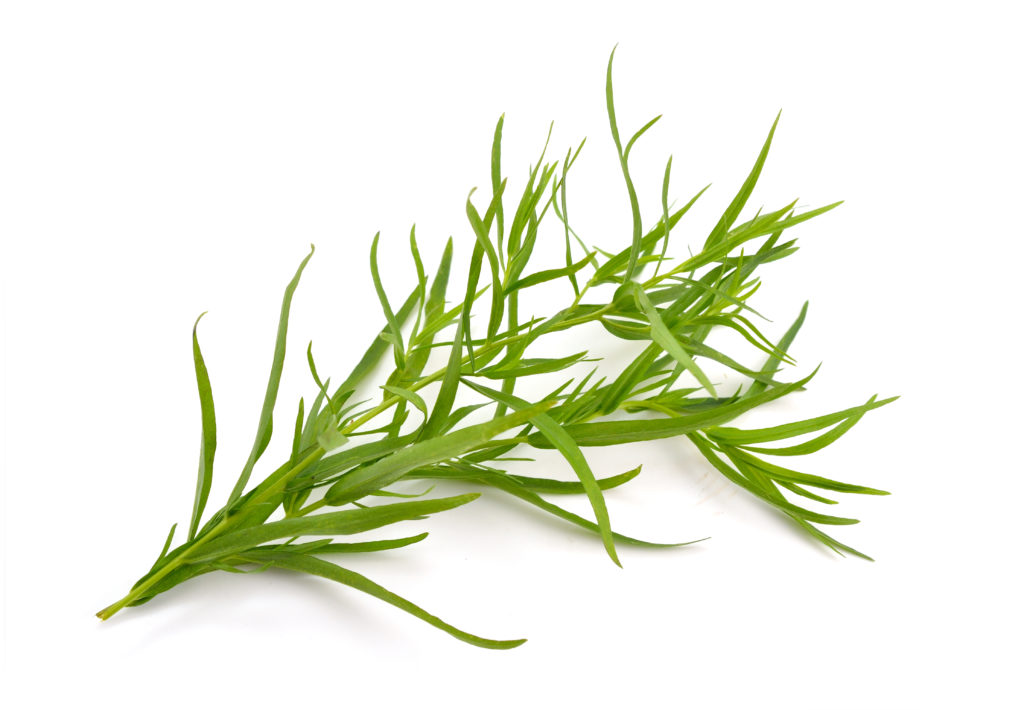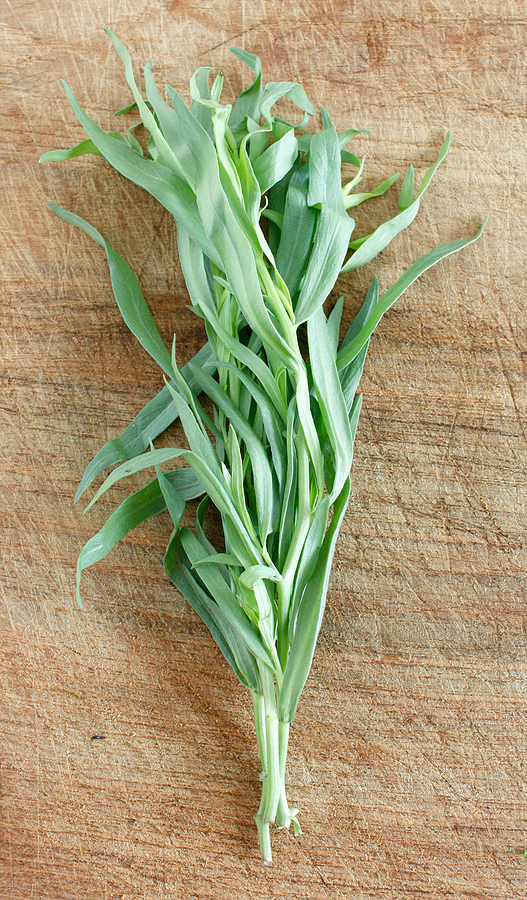Learn how to grow French tarragon in a few minutes. Tarragon—often called French tarragon—is a rich but delicately flavored herb with an anise flavor. It is one of the four sweet or fines herbes favored in French cooking—along with chervil, parsley, and chives. Tarragon is particularly compatible with eggs, fish and shellfish, tomatoes, chicken, and salad greens. French tarragon is always started from divisions, not seeds. Tarragon is perennial but is often treated as annuals and started new with a fresh plant every spring.
Articles of interest:
- How to Grow Herbs
- How to Start an Herb Garden
- Best Herbs for Container Growing
- Herbs for Cool Season Growing
- Grow 20 Herbs for Cooking
Here is your complete guide to growing tarragon,
Where to plant tarragon
- Best location: Plant French tarragon in full sun or partial shade.
- Soil preparation: Grow tarragon in well-drained, sandy loam. It will tolerate poor and nearly dry soil. It does not grow well in cold, wet, or compacted soil. French tarragon prefers a soil pH of 6.0 to 7.3. Tarragon does not grow well in acidic soil.

When to plant tarragon
- Starting plants: French tarragon cannot be grown from seed. French tarragon seed is sterile. (Russian tarragon can be grown from seed.) French tarragon can only be propagated by divisions or cuttings. Root 6- to 8-inch stem cuttings in moist sand. Allow four weeks for stems to root. Divisions of roots will grow into new plants.
- Outdoor planting time: French tarragon cuttings or divisions started indoors can be transplanted into the garden a week or two after the last frost in spring. Cuttings and divisions can be planted again in summer or fall. Cuttings started in late summer or fall should be over-wintered indoors until spring. Established plants can survive cold winters outdoors if protected with a thick layer of mulch.
How to plant tarragon
- Planting depth: Root divisions should be planted at the depth of rooted underground nodes.
- Spacing: Set plants 18 to 24 inches apart; space rows 24 to 36 inches apart.
- How much to plant: Grow one French tarragon plant per household for culinary use; grow 2 to 3 plants for preserving.
- Companion planting: French tarragon grows well with nearly all vegetables and is said to enhance the growth of other vegetables. Interplant tarragon with tomatoes and potatoes.
Watering and feeding tarragon
- Watering: Keep French tarragon evenly moist until plants are established. Once established plants require occasional watering; the soil can go nearly dry between waterings.
- Feeding: French tarragon is a light feeder; foliar spray plants with compost tea or a seaweed extract 2 to 3 times during the growing season.
Tarragon care and maintenance
- Care: Remove flowers to keep plants productive during the growing season. Divide French tarragon every 3 to 4 years to keep plants growing vigorously.
- Mulching: Mulch plants where the ground freezes; mulch after the first freeze so that freezes and thaws do not push the plant up and out of the ground.
Container growing tarragon
- Container growing: French tarragon can be grown easily in a container 6 to 12 inches wide and deep. Tarragon can be grown in hanging baskets. Grow tarragon in a sunny window for year-round harvest
- Winter growing: To over-winter plants indoors, pot up new plants in summer, cutting foliage to just above the soil. Place plants in a sunny window for winter harvest. A cold weather resting period will benefit tarragon.
Tarragon pests and diseases
- Pests: Tarragon has no serious pest problems.
- Diseases: Tarragon is susceptible to downy mildew, powdery mildew, and root rot where the soil or plants stay wet. Avoid planting French tarragon where water collects or where leaves are slow to dry.

How to harvest tarragon
- When to harvest: Pick young, top leaves in early summer for the best flavor. Cut back leafy top growth several times during the season to encourage the plant to bush out with new growth. Stems can be pruned in early summer and again at the end of the season.
- How to harvest: Snip leaves and stems with a garden pruner or scissors. Handle leaves gently; they bruise easily.
Tarragon in the kitchen
- Flavor and aroma: Tarragon has delicate anise or licorice flavor.
- Leaves: Tarragon enhances the flavor of fish, pork, beef, lamb, poultry, pates, leeks, potatoes, tomatoes, carrots, onions, artichokes, asparagus, mushrooms, cauliflower, broccoli, beets, peas, parsley, chervil, garlic, chives, lemons, oranges, and rice. Use tarragon to flavor vinegar, mustards, herbed mayonnaise, herbed butter, cream sauces, soups with cheese, eggs, sour cream, and yogurt. Add tarragon to remoulade sauce, tartar sauce, béarnaise sauce, and French dressing.
- Cooking: Add tarragon near the end of cooking to prevent bitterness.
- Culinary companions: Tarragon is well served with carrots, green beans, peas, and asparagus. Tarragon is a member of the classic quartet of chervil, chives, parsley, and tarragon—known as fines herbes; these delicate herbs are added to many cooked foods shortly before serving.
Preserving and storing tarragon
- Refrigeration: French tarragon is best used fresh. To refrigerate, wrap leaves in a paper towel and place in a plastic bag; tarragon will keep for 2 or 3 weeks.
- Drying: Dry tarragon by hanging stems upside down in bunches in a warm, dry place out of the sun. Tarragon can also be dried in a microwave for about 1 to 3 minutes; check often and remove leaves when they are dry to the touch.
- Freezing: French tarragon can be frozen in a zippered plastic bag. Freeze leaf sprigs in a plastic bag or blend salad oil into a paste and freeze the paste in small containers.
- Storing: Store tarragon in an airtight container.
Tarragon propagation
- Seed: Tarragon seed is sterile. French tarragon can only be propagated by divisions or cuttings. If you buy tarragon seed, you will get Russian tarragon which does not have the licorice flavor or fragrance of French tarragon.
- Cuttings: Root 6- to 8-inch stem cuttings in moist sand. Allow four weeks for stems to root. Root cuttings in summer.
- Division: Root division can be difficult because roots are very tangled. Use a spade to cut through roots if necessary. Prune roots back to about 2 inches and then replant in just moist planting mix. Divide plants in spring. Divide plants every 3 to 4 years.
Tarragon varieties to grow
- Russian tarragon (Artemisia dracunculus sativa) is coarse and bitter-tasting, not recommended for cooking. Russian tarragon is branching and upward growing to 3 feet tall. It has small white flowers in late summer. Russian tarragon, unlike French tarragon, produces seed.
- Mexican tarragon is a species of Tagetes.
Get to know tarragon
- Botanical name and family: Artemisia dracunculus (Asteraceae—daisy family)
- Origin: Caspian Sea, Siberia
- Type of plant: French tarragon is a perennial often grown as an annual. (A separate plant called Russian tarragon is also a perennial. Russian tarragon is not grown for culinary use.)
- Growing season: Summer
- Growing zones: Zones 4 to 8
- Hardiness: Tarragon is resistant to cold and heat; it’s cold hardy to -10°F but can die back to the ground in freezing weather.
- Plant form and size: French tarragon is a sprawling, mostly flowerless plant with aromatic leaves reminiscent of anise and mint. French tarragon grows from 12 to 24 inches tall; it spreads from tangled, underground rhizomes.
- Flowers: French tarragon produces sterile cloves and cannot be grown from seed. (A different plant called Russian tarragon can be grown from seed, but it is considered by most to be too bitter for culinary use.) Tarragon may occasionally produce small greenish-white flowers in branched clusters.
- Bloom time: Summer
- Leaves: Tarragon has long stems and shiny, slender, dark green, aromatic leaves about one inch long and pointed at the end.
Also of interest:
- Anise
- Anise Hyssop
- Arugula
- Basil
- Bay
- Bee Balm
- Borage
- Calendula
- Caraway
- Catnip
- Chamomile
- Chervil
- Chives
- Cilantro-Coriander
- Clary
- Costmary
- Cress
- Dill
- Fennel, Sweet
- Horseradish
- Hyssop
- Lavender
- Lemon Balm
- Lemongrass
- Lemon Verbena
- Lovage
- Marjoram
- Mint
- Nasturtium
- Oregano
- Parsley
- Perilla
- Rosemary
- Sage
- Salad Burnet
- Savory
- Scented Geranium
- Shiso
- Sorrel
- Stevia
- Sweet Cicely
- Tarragon
- Thyme
Best Herbs for Container Growing
Planning the Home Fruit Garden
Garden Planning Books at Amazon:
- Vegetable Garden Almanac & Planner
- Kitchen Garden Grower’s Guide Vegetable Encyclopedia
- Vegetable Garden Grower’s Guide
- Tomato Grower’s Answer Book















